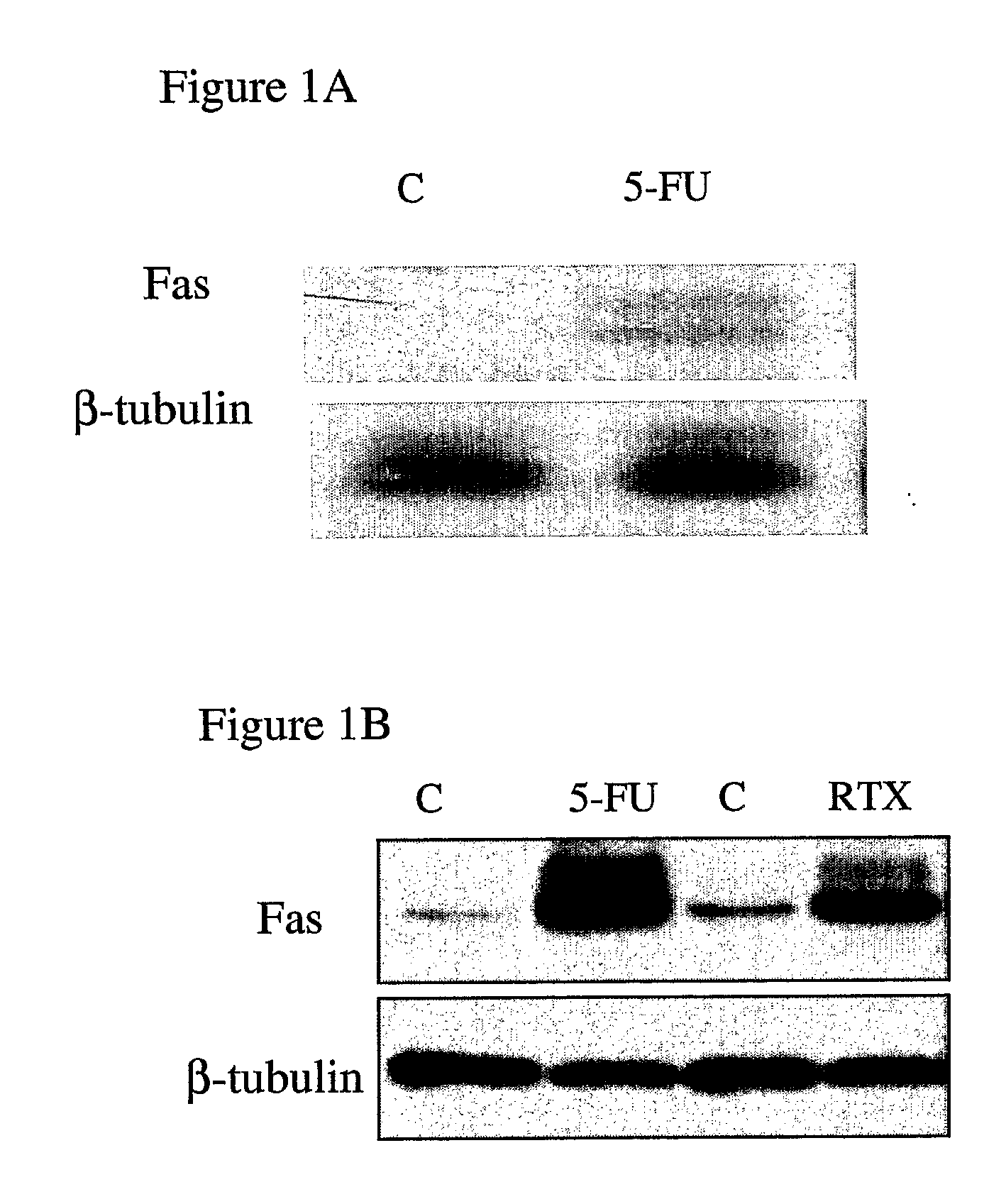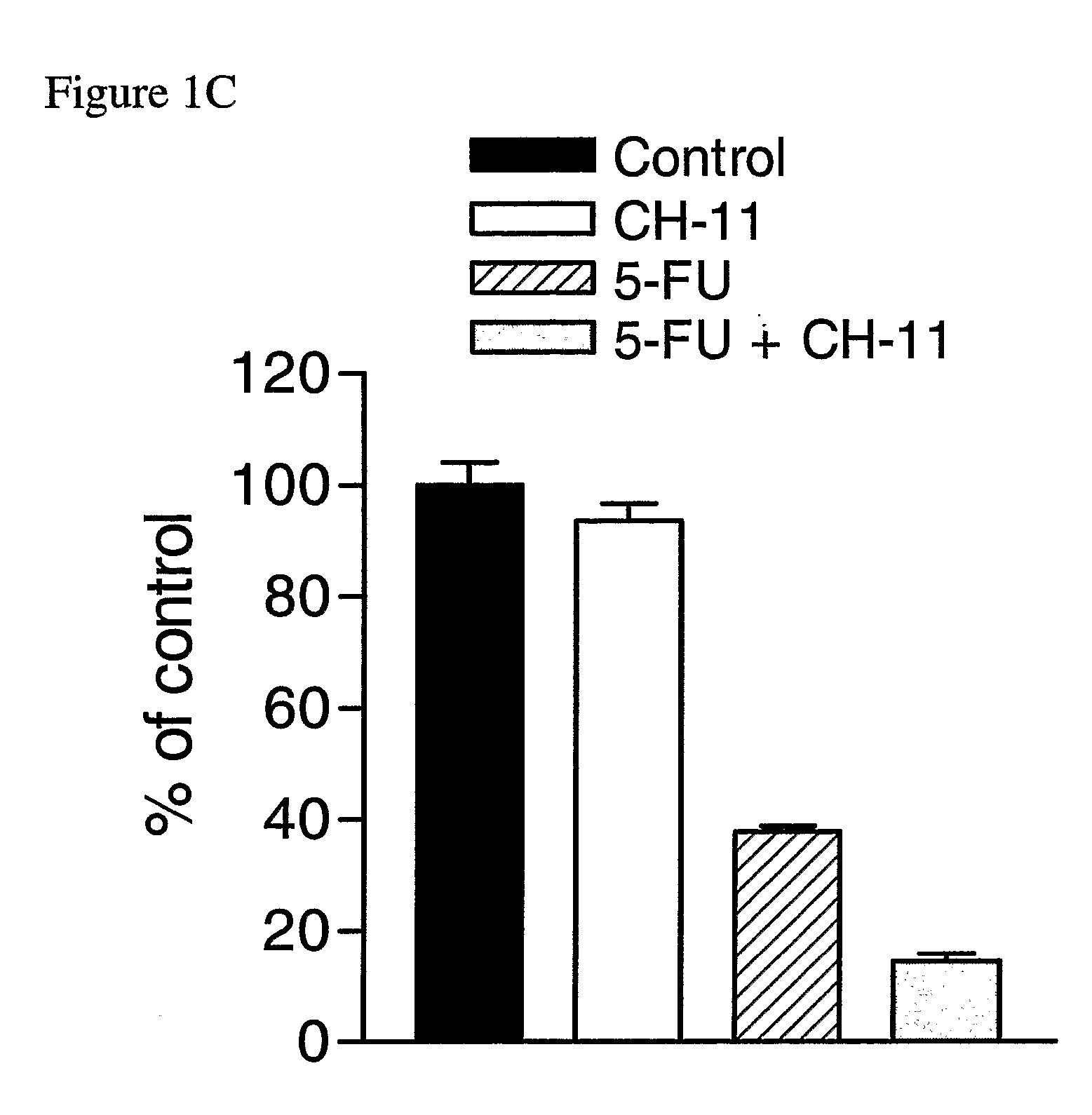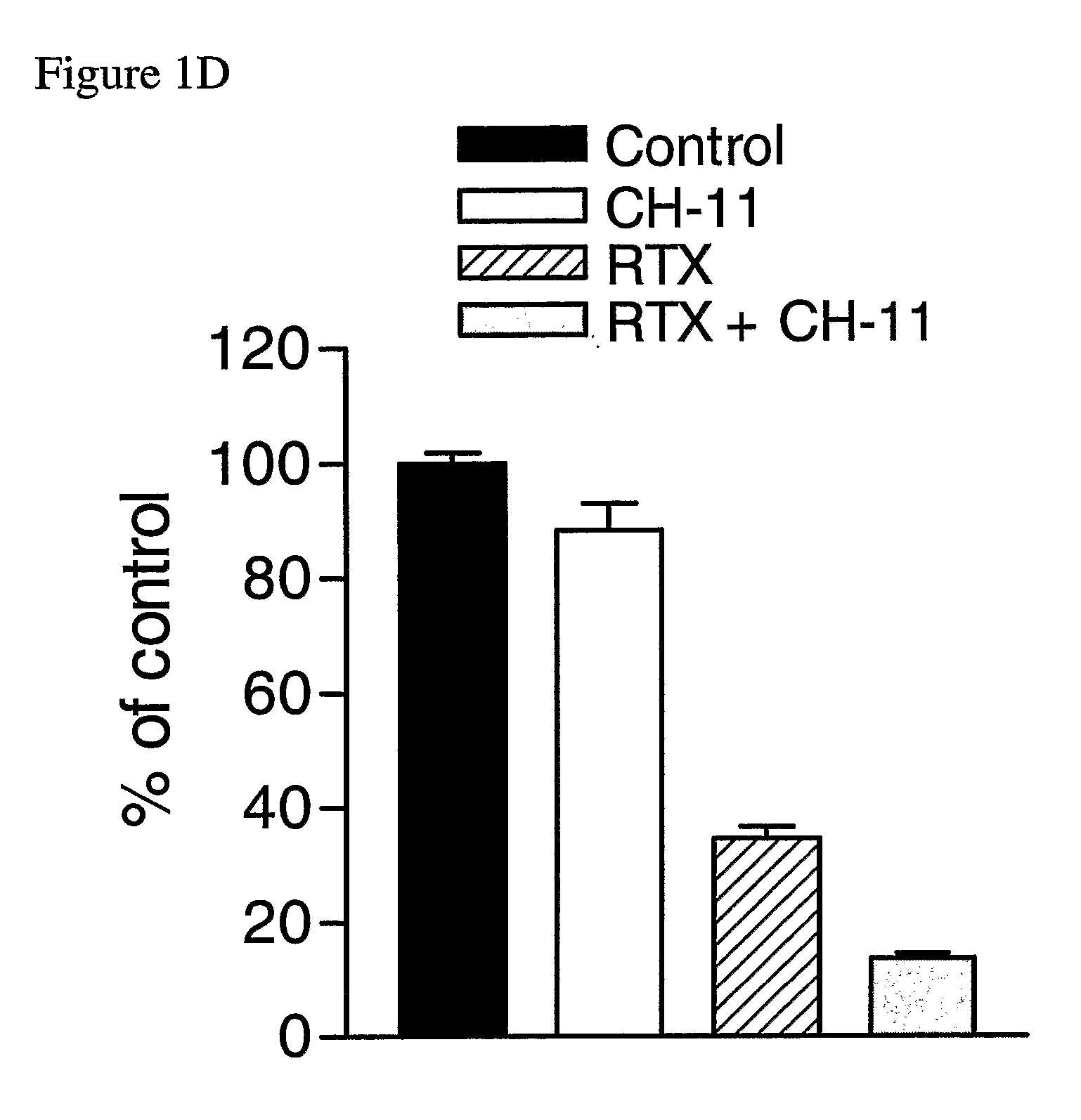Combination Therapy
a technology of conjugation therapy and cytokine, applied in the field of conjugation therapy, can solve the problems of inability to treat patients who do not respond to 5fu-based chemotherapy, imbalances in intracellular dntp pools, and inhibition of dna synthesis, so as to achieve the effect of inhibiting parp cleavage, reducing procaspase 8 levels, and potent activation of caspase 8
- Summary
- Abstract
- Description
- Claims
- Application Information
AI Technical Summary
Benefits of technology
Problems solved by technology
Method used
Image
Examples
example 1
Fas is Highly Up-Regulated in Response to 5-FU and RTX
[0140] Using DNA microarray profiling, the inventors previously identified the Fas death receptor as being highly up-regulated in response to 5-FU in MCF-7 cells (7). Northern blot analyses confirmed that Fas mRNA was up-regulated in MCF-7 cells 48 hours following treatment with an IC60 dose (5 μM) of 5-FU (FIG. 1A). Analysis of Fas protein expression in MCF-7 cells revealed that it was up-regulated by ˜12-fold 72 hours after treatment with 5-FU (FIG. 1B). Fas was also highly up-regulated (by ˜7-fold) in response to treatment with an IC60 dose (25 nM) of RTX (FIG. 1B).
example 2
The Agonistic Fas Monoclonal Antibody CH-11 Synergistically Activates Apoptosis in Response to 5-FU and RTX
[0141] To examine the role of the Fas signalling pathway in mediating the response of MCF-7 cells to 5-FU and RTX, the inventors used the agonistic Fas monoclonal antibody CH-11. Cells were treated with IC60 doses of each drug for 72 hours, after which time they were treated with 250 ng / ml CH-11 for a further 24 hours. Treatment with 5 μM 5-FU alone resulted in a ˜60% reduction in cell viability compared to control (FIG. 1C). Treatment with CH-11 alone without prior incubation with 5-FU caused a modest ˜6% decrease in cell viability. However, treatment with 5-FU followed by CH-11 was found to result in an ˜84% decrease in cell viability. The combined treatment had an RI value of 2.40 indicating that the interaction was highly synergistic. This was further confirmed by ANOVA analysis, which indicated that the synergistic interaction between the drugs was highly statistically si...
example 3
Effect of 5-FU and RTX on Fas Signal Transduction
[0144] The inventors next examined drug-induced activation of the Fas signalling pathway in response to 5-FU and RTX. Although Fas was highly up-regulated (>10-fold) in MCF-7 cells in response to IC60 doses of either drug, FasL expression was unaffected (FIG. 3A). Surprisingly, neither caspase 8, nor its substrate BID were activated in 5-FU- or RTX-treated cells as indicated by a lack of down-regulation of the levels of procaspase 8 or full-length BID (FIG. 3A). The inventors subsequently analysed activation of the Fas pathway in MCF-7 cells following co-treatment with 5-FU and CH-11. Fas, procaspase 8 and BID expression levels were determined in cells treated with 5 μM 5-FU for 72 hours followed by 250 ng / ml CH-11 for 24 hours and compared to cells treated with 5-FU alone or CH-11 alone for the appropriate time periods (FIG. 3B). Treatment with CH-11 alone had no effect on Fas, procaspase 8 or BID expression (FIG. 3B, lane 2). As al...
PUM
| Property | Measurement | Unit |
|---|---|---|
| Composition | aaaaa | aaaaa |
| Concentration | aaaaa | aaaaa |
| Chemotherapeutic properties | aaaaa | aaaaa |
Abstract
Description
Claims
Application Information
 Login to View More
Login to View More - R&D
- Intellectual Property
- Life Sciences
- Materials
- Tech Scout
- Unparalleled Data Quality
- Higher Quality Content
- 60% Fewer Hallucinations
Browse by: Latest US Patents, China's latest patents, Technical Efficacy Thesaurus, Application Domain, Technology Topic, Popular Technical Reports.
© 2025 PatSnap. All rights reserved.Legal|Privacy policy|Modern Slavery Act Transparency Statement|Sitemap|About US| Contact US: help@patsnap.com



